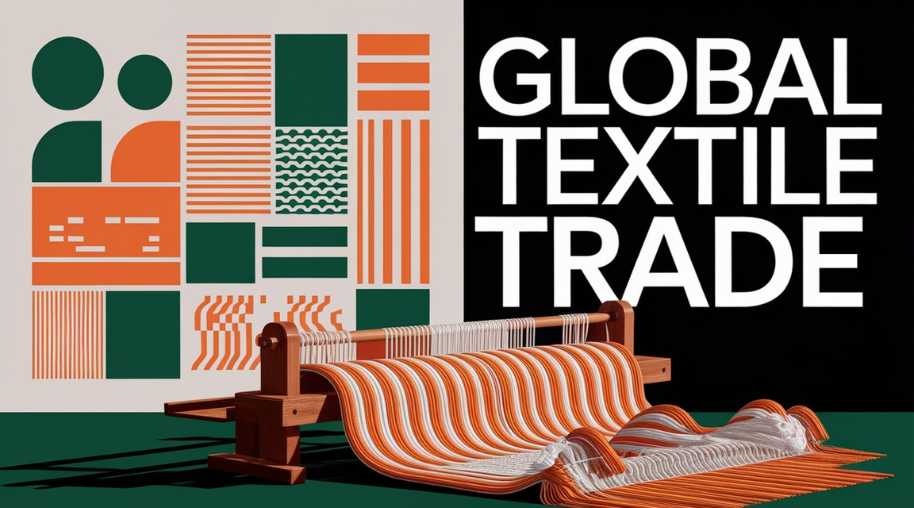MFA Full Form-Multi Fibre Agreement
by Shashi Gaherwar
0 2063
Multi Fibre Agreement (MFA): Impact on Global Textile Trade and Its Abolition
Introduction
The Multi Fibre Agreement (MFA) was a crucial global trade policy that regulated the textile and clothing industry for over three decades. Implemented in 1974, the agreement imposed quotas on textile and garment exports from developing countries to developed nations to protect domestic industries in wealthier countries. However, it was eventually phased out in 2005, leading to significant changes in the global textile trade.
This article explores the history, objectives, impact, and consequences of the MFA’s abolition.

What is the Multi Fibre Agreement (MFA)?
The MFA was an international trade agreement that imposed import quotas on textile and clothing products exported from developing countries to developed economies such as the United States, Canada, and the European Union. It aimed to protect domestic industries in developed nations from competition with low-cost producers in countries like China, India, and Bangladesh.
The agreement was administered by the General Agreement on Tariffs and Trade (GATT) and later by the World Trade Organization (WTO).
Objectives of the Multi Fibre Agreement
The MFA was introduced with multiple objectives:
- Protect Domestic Textile Industries: Developed countries sought to limit imports from low-cost manufacturing nations to safeguard domestic jobs and industries.
- Regulate Global Textile Trade: The MFA aimed to stabilize textile trade and prevent market disruptions caused by sudden surges in imports.
- Encourage Orderly Competition: By restricting the volume of textile imports, the agreement aimed to create fairer competition between developing and developed nations.
Impact of the Multi Fibre Agreement
The MFA had a significant impact on the global textile and clothing trade, benefiting some economies while restricting others.
- Effects on Developing Countries:
- Countries like China, India, Bangladesh, and Vietnam faced restrictions on their exports, slowing their industry’s growth.
- However, some smaller developing nations benefited as developed countries diverted orders to them to stay within quota limits (e.g., Mauritius, Sri Lanka, and Honduras).
- Impact on Developed Nations:
- Domestic textile producers in countries like the United States, Canada, and the European Union received protection from cheaper imports.
- However, higher prices for consumers and limited product choices led to criticism of the agreement.
- Distortion of Free Trade:
- The quota system created trade distortions, preventing true market-driven competition.
- Some manufacturers relocated to quota-free countries, leading to inefficiencies in the global supply chain.
Abolition of the Multi Fibre Agreement
The MFA was phased out under the WTO’s Agreement on Textiles and Clothing (ATC) between 1995 and 2005. The full abolition of the quota system took place on January 1, 2005, marking a major shift in global textile trade.
Reasons for MFA Abolition:
- The MFA was seen as a protectionist measure that violated free trade principles.
- The WTO aimed to liberalize global trade and integrate textiles into normal trading rules.
- Developed countries faced pressure from businesses and consumers to remove artificial trade barriers.
Impact of MFA Abolition
The end of the MFA in 2005 led to significant changes in the global textile industry:
- Rise of China as a Dominant Exporter:
- China became the largest global textile exporter due to its low-cost manufacturing, skilled labor, and large production capacity.
- Many Western brands and retailers shifted production to China after quota restrictions were lifted.
- Growth of Other Asian Exporters:
- Countries like Bangladesh, Vietnam, and India gained market share due to their low labor costs and improved textile industries.
- Bangladesh, in particular, became a major garment manufacturing hub due to its competitive pricing.
- Decline of Some Smaller Textile-Exporting Nations:
- Some smaller economies that had benefited from quota protection (e.g., Sri Lanka, Mauritius) struggled to compete after quotas were removed.
- Lower Prices for Consumers:
- The removal of quotas led to greater competition, higher efficiency, and lower retail prices for consumers in developed countries.
- Challenges for Domestic Textile Industries in Developed Nations:
- The domestic textile industries in the United States and Europe faced increased competition from imports, leading to factory closures and job losses.
The Multi Fibre Agreement (MFA) played a crucial role in shaping the global textile trade by imposing quotas on developing countries’ exports to protect domestic industries in developed nations. While the agreement provided stability, it also distorted free trade.
The abolition of the MFA in 2005 led to a major shift in global textile production, with China, Bangladesh, and Vietnam emerging as key players. While consumers benefited from lower prices, many domestic textile industries in developed countries suffered.
Understanding the impact of the MFA helps in analyzing global trade policies, the role of the WTO, and the evolving nature of the textile industry.
Further Learning Resources
If you’re passionate about building a successful blogging website, check out this helpful guide at Coding Tag – How to Start a Successful Blog. It offers practical steps and expert tips to kickstart your blogging journey!
For dedicated UPSC exam preparation, we highly recommend visiting www.iasmania.com. It offers well-structured resources, current affairs, and subject-wise notes tailored specifically for aspirants. Start your journey today!

Share:








Comments
Waiting for your comments